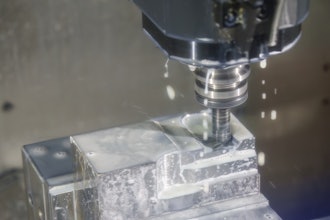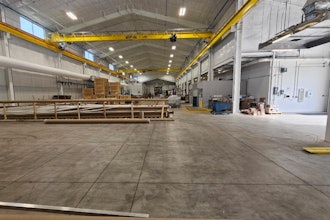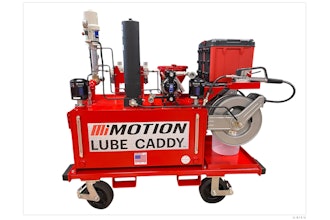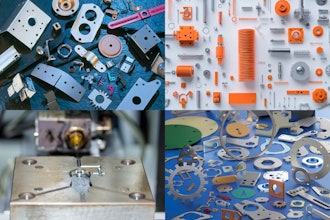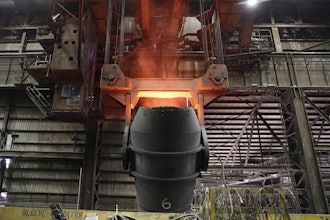These days, it’s hard to find a manufacturer that isn’t under pressure to create an increasing volume of content that needs to reach the right audience at the right time and on the right device. This means sharing targeted information with customers, potential customers, partners and users across multiple channels and media formats, including print, the Web, and even mobile apps. It’s a pressure that isn’t letting up anytime soon — and brings with it very specific challenges.
Manufacturers, whose success often relies on the creation and distribution of accurate and up-to-date product information for hundreds or even thousands of products, may be struggling to keep up with today’s requirements. If so, they aren’t alone. A recent study by InfoTrends, a market research and strategic consulting firm, found that the top three business-critical content types in manufacturing are No. 1 technical documentation; No.2 training material and No. 3 product data sheets.
The InfoTrends study also uncovered seven content challenges manufacturers face and what businesses in this sector must do to evolve their content strategies. Ultimately, the findings underscore that while the ways we find and consume content have changed beyond recognition, the ways content is created and distributed has changed very little.
Seven Content Challenges
1.Fragmented content strategy: 75 percent of the InfoTrends survey respondents reported that a fragmented content strategy stifles the content lifecycle, citing that the re-creation of existing content and too little insight into content consumption are major challenges.
2.Inefficient review and approval: Nearly 50 percent of survey respondents said they spend too much time editing and reviewing content, due to the fact that email and PDF markup are the primary tools used to manage the process. The truth is, routing content updates and approval through emails and redlined PDFs is highly inefficient and incredibly error-prone.
3.Reliance on Enterprise Content Management (ECM): 30 percent of survey respondents said their current ECM is difficult to configure for their specific requirements and 25 percent said their ECM doesn’t support automated content reuse and updating. This emphasizes the fact that EMC solutions are really designed for specific functions, such as scanning, capture and management of files, and file-centric workflows and processes.
4.Creating static documents: From an efficiency standpoint, it's crucial for manufacturers to develop reusable content components that are format-agnostic, i.e., usable across multiple platforms. But too many companies still use outdated processes, managing files instead of content and reinventing the wheel rather than pursuing a smart content reuse strategy.
5.Translation costs: The survey showed the requirement for translation was highest in manufacturing, most probably due to regulatory requirements. Translating content into local languages is expensive, which prevents many companies from expanding operations into new markets or providing the most updated product information to all markets.
6.Regulatory compliance: Depending on the industry served, manufacturers are often affected by regulatory and compliance mandates. Inadequate content tracking and versioning capabilities make is difficult to keep up with legal requirements, brand guidelines and policy changes, which all lead to errors in regulated content.
7.Multichannel delivery: 65 percent of survey respondents said they are not confident their content is consistent across print, Web and mobile channels — which is a significant issue for manufacturers who must display the exact same product information across print, Web and mobile channels, even as the product information is updated frequently.
As manufacturers continue a transition away from print-centric communications and embrace digital channels for creating, approving, publishing and distributing content, one issue remains: how to improve these processes to solve the seven content challenges outlined above. The only real answer is to automate the process. Content automation improves and streamlines timeworn content processes in the following ways:
- It makes the creation and consumption of content more efficient.
- It automates content to multiple platforms, making it available much faster.
- It simplifies keeping track of content updates.
- It makes finding and reusing content a breeze.
- It enables the delivery of personalized content to different audiences.
- It significantly streamlines translating content into other languages.
To migrate to content automation and away from traditional, manual content processes, keep in mind these best practices:
1.Conduct a content audit: The best way to understand your content is to conduct an in-depth content audit. It is critical to modern content creation and management and will help determine the requirements for a content automation platform.
2.Know your content structures: A fundamental aspect of modernizing your content processes will be moving away from static, unstructured documents to structured content components that can be easily managed, tracked, updated and reused.
3.Choose friendly content tools: When it comes to authoring structured content, technical writers are comfortable working with an XML editor. However, most writers are subject matter experts who don’t use complicated XML tools. Therefore, select authoring tools that are help experts create structured content in familiar word processor-like environments.
4.Match the solution to your content: There are five major categories of solutions for content and creation and management — authoring, document management, Web content management, publishing, and content automation. It’s important to select the option that matches the type, volume, scale and frequency of the content you create.
5.Use a phased implementation approach: The most effective way to implement a new content automation platform is to crawl, walk, run. Start with a small step, such as migrating a single data sheet or group of data sheets associated with the same product. Learn from the first migration and then add more content types, users, locations and channels.
In the same way that the manufacturing industry embraced automation to meet the insatiable consumer demand for products, it now needs to automate the content process to meet consumers' demand for digital content. Moving from a document-based content strategy to a component-based strategy is no small feat, but when managed well it has the potential to transform a manufacturers business.
Gavin Drake is Vice President of Marketing at Quark Enterprise Solutions.













